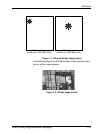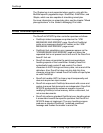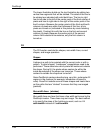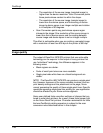
PostScript
Guide to Using Page Description Languages 1-21
• A job executes code that flushes the input data up to EOJ.
Because the control-D is not interpreted as EOJ, it does not
stop the flushing. Therefore, the rest of the PostScript jobs in
the input file are ignored.
DocuPrint NPS/IPS implementation of PostScript Level 2
DocuPrint NPS/IPS implements the PostScript Level 2 operators;
it conforms to the PostScript Language as defined in the
PostScript Language reference manuals.
DocuPrint does not support the following device-specific
operators:
banddevice
,
framedevice
, and
renderbands
(device
setup and output operators). These operators are device-
specific.
• In PostScript Level 2, the LZWEncode, CCITTFaxEncode,
and DCTEncode filter names are not supported with the
filter
operator.
NOTE: The DCTDecode filter does not work correctly for all
full color images.
• Unlike the Adobe implementation of PS Level 2, the
setfileposition
operator is permitted on %stdin when the
standard input comes from a file.
•The
charpath
operator is not supported with the PostScript
Level 1 interpreter when used on type 3 fonts, However, this
operator is supported with PostScript Level 2.
Due to support of mixed paper sizes, PostScript files that use the
clippath pathbbox
operators to determine the imageable area
of the page will not image shift correctly. Image shifting will not
occur by using the AdjustX and AdjustY system options nor the
image shift document attributes: HorizontalImageShift,
HorizontalImageShiftforBack, VerticalImageShift,
VerticalImageShiftforBack, and the ExceptionPage image shift.
Simulated mixed plex
For releases prior to 7.x, simulated mixed plex is supported using
the standard PostScript Level 2 /Duplex pagedevice key. The /
Duplex key is supported only with the PostScript Level 2
interpreter when the plex attribute value is “duplex.” The /Tumble
key is not supported.


















